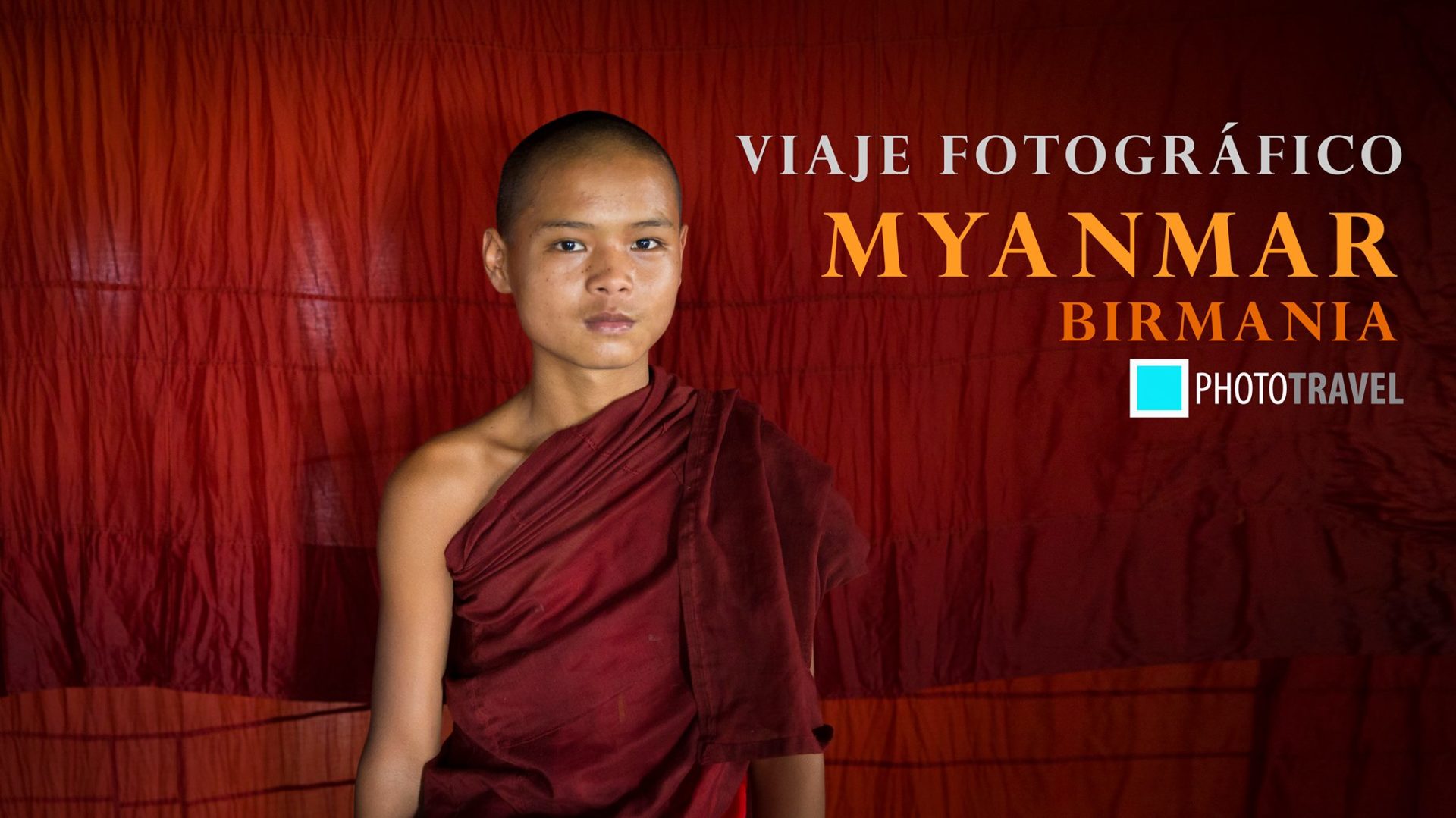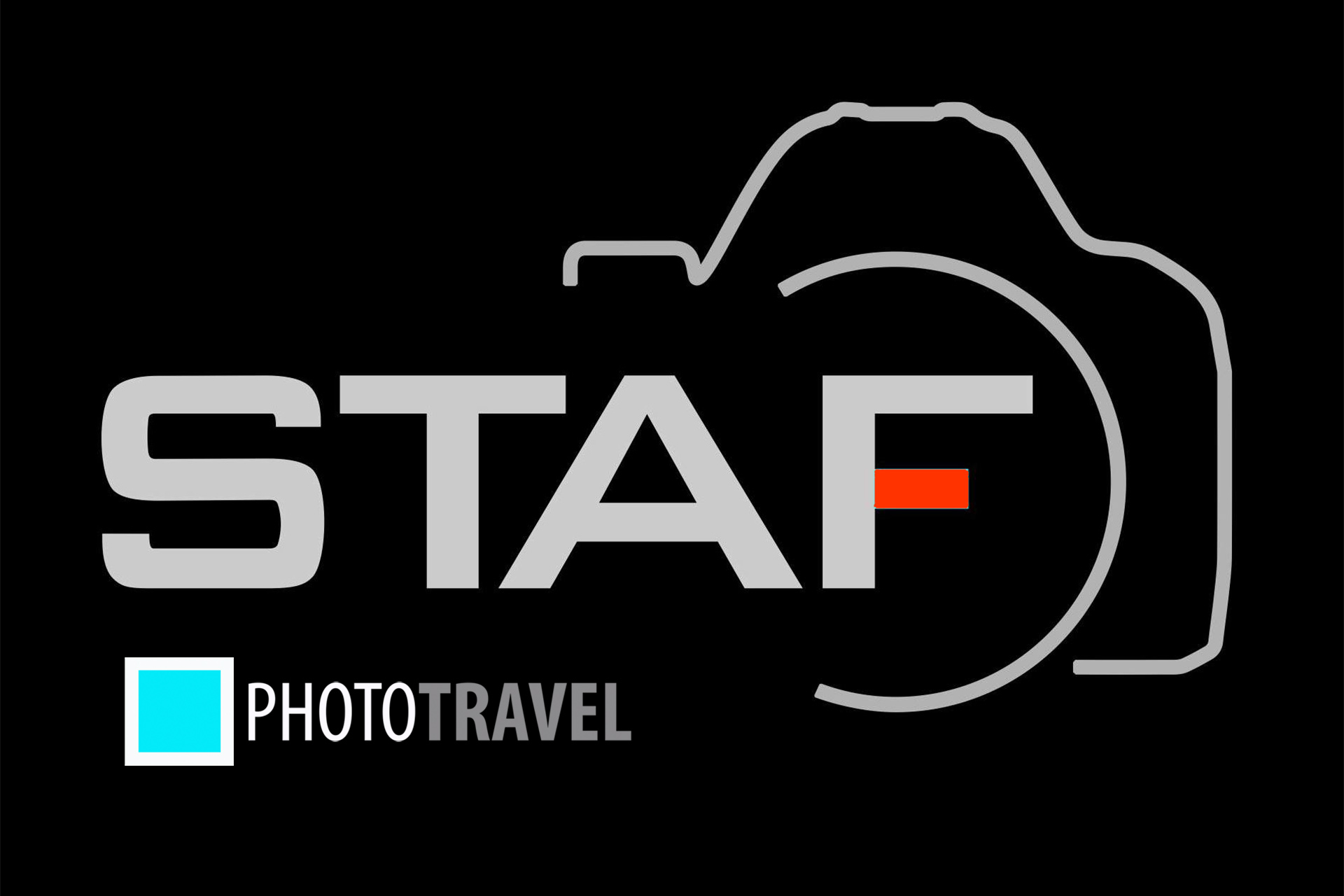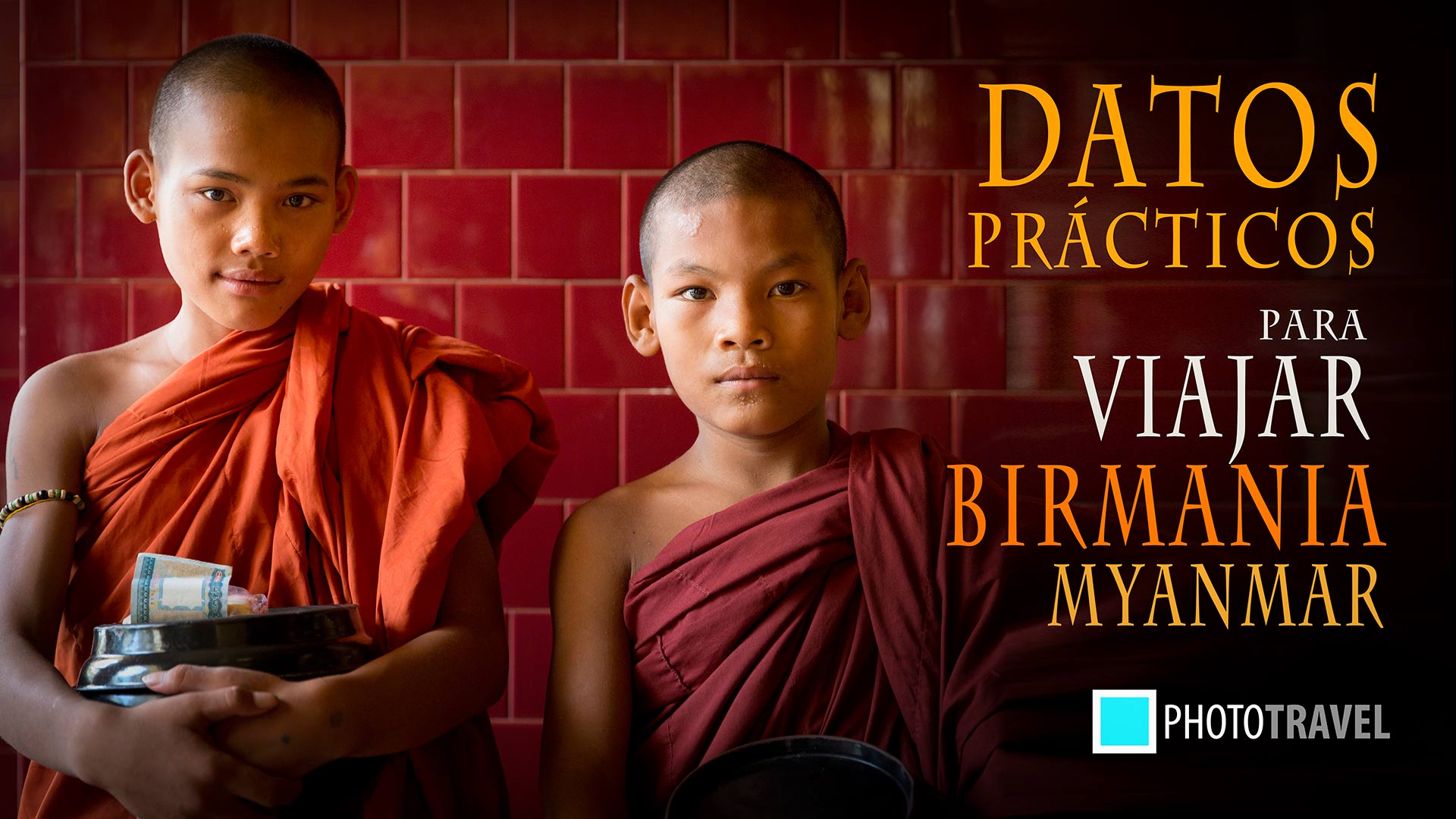
PhotoTravel takes us back on a Photo Tour to Myanmar, a formerly closed country that is now opening up to the world with its rich history and culture of ancient empires and its past of British colonialism.
We thought that the best way to start a Photo Trip is to have some tips and practical information that will help us when organizing our next adventure!
WHY TRAVEL TO MYANMAR?
Southeast Asia is one of PhotoTravel’s favorite areas. Their variety of cultures and their political and economic stability make these countries an attractive and safe destination.
Many of the countries in this area are reaching an overexploitation of tourism, caused by the economic prices and the varied offer.
Myanmar is a special case, fresh from the secrecy of a long dictatorship, it is an almost virgin country in terms of tourism, if we compare it with its surroundings (Thailand, Vietnam, Cambodia…).
The advantage of this situation is that you will find a country yet to be discovered, where an incipient tourist infrastructure allows a comfortable welcome, without the burdens of overcrowding. On the other hand, the prices of these infrastructures are higher than in neighbouring countries.
Have you ever had the feeling that you have visited a country too late, when it was already very exploited for tourism? Well, this won’t happen to you in Myanmar. You will have the feeling of visiting an authentic country, in its people, its traditions, its culture. Don’t hesitate, it’s time to visit Myanmar!
BRIEF HISTORY
On January 4, 1948, Burma ended 60 years of colonial rule when it declared its official independence from Britain. That year a communist movement began that lasted until 1960, the year in which elections were called that the communists themselves won. In 1962, after a coup d’état, the military regime headed by Ne Win was imposed, who would later be elected president and re-elected again in 1978. On August 8, 1988, a popular uprising broke out to demand democracy, but it was crushed by General Saw Maung who rose to power after the largest bloodbath in the history of the country (thousands of people died in just 1 month and 10 days).
In 1990 came the first “free” elections in 30 years, but the landslide victory of Aung San Suu Kyi’s party was annulled by the military, which refused to leave power. Aung San Suu Kyi was placed under house arrest and was awarded the Nobel Peace Prize in 1991 , becoming an icon of democracy, world peace and freedom.
In 2010 Aung San is released again from her arrest.
In the elections of March 15, 2015, Htin Kyaw, a friend and adviser to Aung San Suu Kyi, became the first civilian head of state since the 1960s.
MYANMAR / BURMA
In 1989 the military government resulted from a coup d’état in 1988, changing the name of Burma to Myanmar, “Republic of the Union of Myanmar”.
Myanmar is an eminently rural country, with an area of 676,552 square kilometers (Spain, 504,750), with a population of 50 million inhabitants, 87% of whom are Buddhists.
CAPITAL
Its capital is Naypyidaw and its most populous city is Yangon (Yangon), the former capital of the country until 2005.
GOVERNMENT
It is a parliamentary Republic. Since March 2018, the government has been led by President Myint Swe and Nobel Peace Prize laureate Aung San Suu Kyi as State Counsellor.
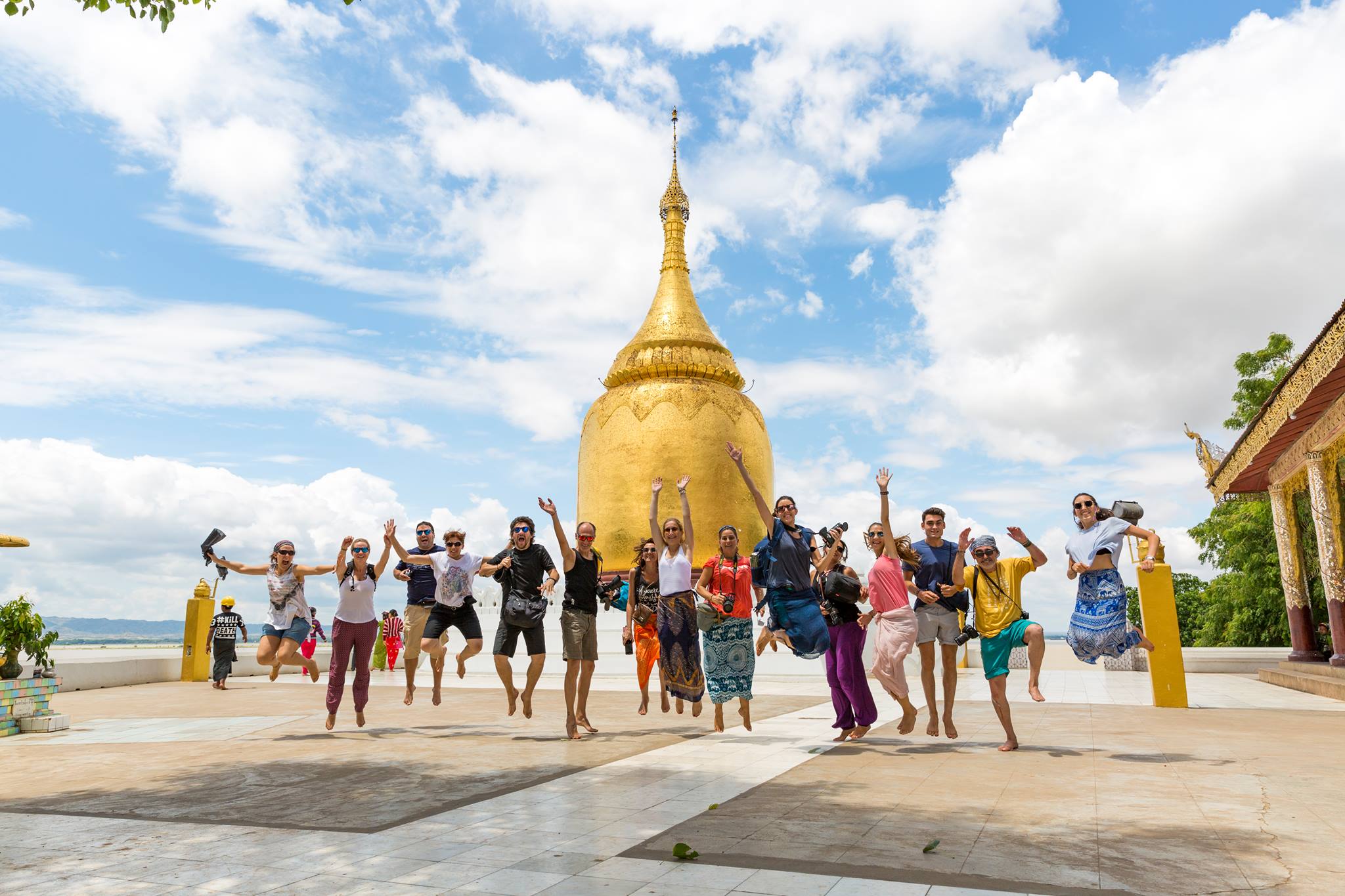
THE BEST, ITS PEOPLE
Among all those who have visited Myanmar there seems to be unanimity, one of the best things that this country offers are its people.
Friendly, always smiling, eager to talk at all hours. They really like contact with foreigners. Young people and monks love to ask you questions so they can practice their English.
His gaze has a purity of those that is no longer found. They make it very easy for you, they seem eager for you to feel comfortable in their country.
Despite that tender and friendly look, through which their hearts come out, at the same time they are very shy, and it is difficult for them to pose naturally when you ask them to let you photograph them. Many times they avoid looking directly at the camera. Of course, they love to take pictures with you!
RELIGION
The predominant religion in Myanmar is Theravada Buddhism, which is professed by around 89% of its inhabitants. There are also minority communities of Christians and Muslims.
The physiognomy of the country is totally determined by Buddhism. At every step you will find religious references: monasteries (some with more than 100 monks), pagodas of all sizes (in Bagan you will be amazed!!), images of Buddha of all kinds, and of course, monks of all ages wrapped in their saffron and burgundy robes (a population of about 500,000 monks is estimated, there are as many monks as there are soldiers).
The monks are highly respected in the country, especially since they peacefully took to the streets in 2007 and defied the government with the “saffron revolution”, calling for democracy for the country. Many monks died in the protests, but thanks to them the history of Myanmar changed for the better.
It is a very devout country, so you will find small inscriptions in the markets or at the entrance of the temples in which you will be asked, out of respect, not to be photographed with the monks, to respect their temples with appropriate clothing and not to buy images of Buddha as souvenirs. Oh, and no Buddha tattoos…
VISA
Its application is very simple, the electronic visa form is filled out online (upon payment of the corresponding fees, 50 dollars) and then it is validated when entering the country through one of its airports: Mandalay, Yangon or Naypyidaw
The visa is valid for three months, it is granted only for a non-renewable stay of 28 days, counting from the date of entry.
You can apply for the e-Visa through the following website:
VACCINES
No vaccination is required to visit the country. Hepatitis A and B, tetanus, and typhoid vaccines are recommended. In any case, we always insist from PhotoTravel that before taking a Photographic Trip you must visit the International Vaccination Center in your city and that a specialist doctor advises and recommends you.
It is important to take precautions to avoid food poisoning (traveler’s diarrhea), you know, it is discouraged to eat from street stalls and drink tap water. Vegetables and fruits should be eaten after being washed with water and some disinfectant and/or peeled…
HEALTH
Myanmar’s public health system is weak, especially in rural areas. Infrastructure and basic medical services are poor. It is recommended to travel with an emergency kit.
However, there are private hospitals or clinics in Yangon of better quality than public centers, at PhotoTravel we are always well insured with good accident and illness insurance!
EMBASSY
The embassy of reference for Spain is the one located in neighbouring Thailand
EMBASSY OF SPAIN IN BANGKOK
Unit 193/ 98-99 Lake Rajada Office Complex, 23rd. Floor 193 Ratchadapisek Road Klongtoey, Bangkok 10110
Tel.: +66 (0) 2 661 8284 / 7
Consular Emergency Phone: +66 (0) 818687507
Fax: +66 (0) 2 6619220
e-mail: emb.bangkok.inf@maec.es
DIPLOMATIC REPRESENTATIVE OFFICE IN YANGON
Head of Office (Chargé d’affaires a.i) Bibian Zamora Giménez
Hledan Center, 6th floor (inside the Delegation of the European Union)
Pyay Road corner with Hledan Road
Kamayut Township
Yangon/Yangon
Landline: +95 (0) 1 230 44 17;
Consular Emergency Telephone: +95 (0) 9 250 97 98 80
Fax: +95 (0) 1 230 44 18
Email: emb.yangon@maec.es
SAFETY
Myanmar is a safe country, you can visit it without major problems, especially the areas where we are going to be on our Photo Trip.
The small scams of taxi drivers or vendors is the most serious thing you will find. Don’t worry, the people are very friendly, always with a smile on their faces, trying to make you feel comfortable!!
TIME ZONE
The time difference is 6 and a half hours more than in Spain.
LANGUAGE
Myanmar is a country with many ethnic groups, which means that different languages spread throughout the country coexist (about 100). Burmese is the official language, spoken by two-thirds of the population, and since it does not use our spelling, it is difficult to write it and also to understand.
English is the second most spoken language and is taught in many schools (influences from the former metropolis). In the cities it is easy to understand each other in English, but in the rural environment things are complicated.
But you know, with these four little phrases you go everywhere:
- Good morning / Good night = Mingalarbar
- Thank you (many) = Jay zu tin bar deh
- Sorry / Apology = Jay zu pyu jouer
- Yes/No = Hoe tale / ma hoe bou
- How much does it cost? = Be lauq leh?
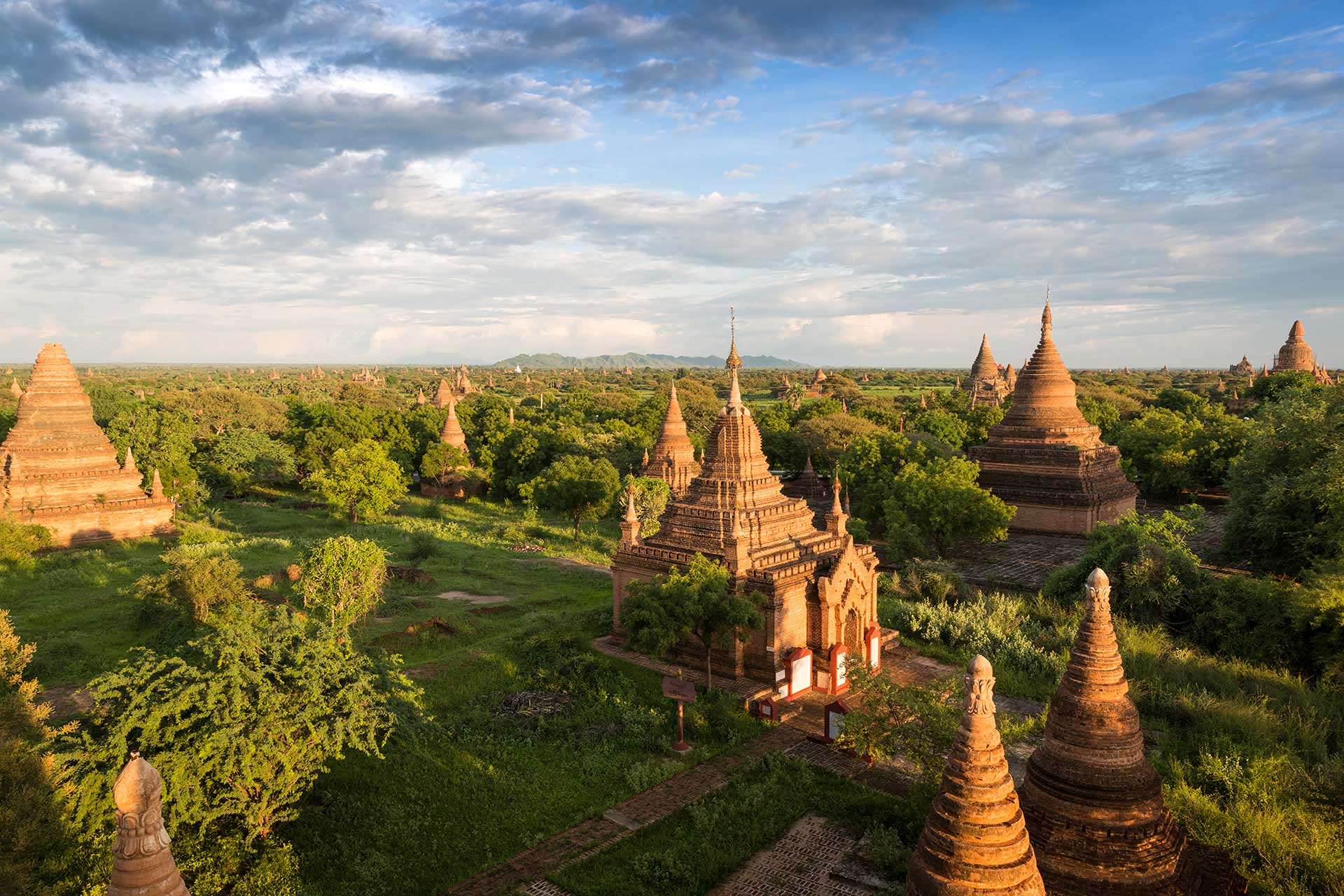
CURRENCY/ EXCHANGE RATES
The currency is the Burmese Kyat (approximately 1 euro is equivalent to 1,400 kyats). This coin has little value, which means that to have some money you have to carry a lot of bills, and when I say a lot I mean a good taco!
It is currently possible to withdraw money with a credit card at ATMs throughout the country. You can also exchange money at currency exchange agencies in airports and big cities, you can pay in many places with US dollars, but you will lose out on the exchange.
VERY IMPORTANT!! in Myanmar the exchange houses and banks will ask you that the dollars or euros you deliver are PERFECT!!.. as long as they are folded or have some mark, no matter how small it is, they do not take them.
PRICES
The prices are not as cheap as you might think and for the tourist do not think that everything is thrown out of price. Hotels are more expensive than in other countries in the area, restaurants not so much and transport, as they are for tourists, cost a lot. Haggling is basic since many sellers will ask you for exorbitant prices.
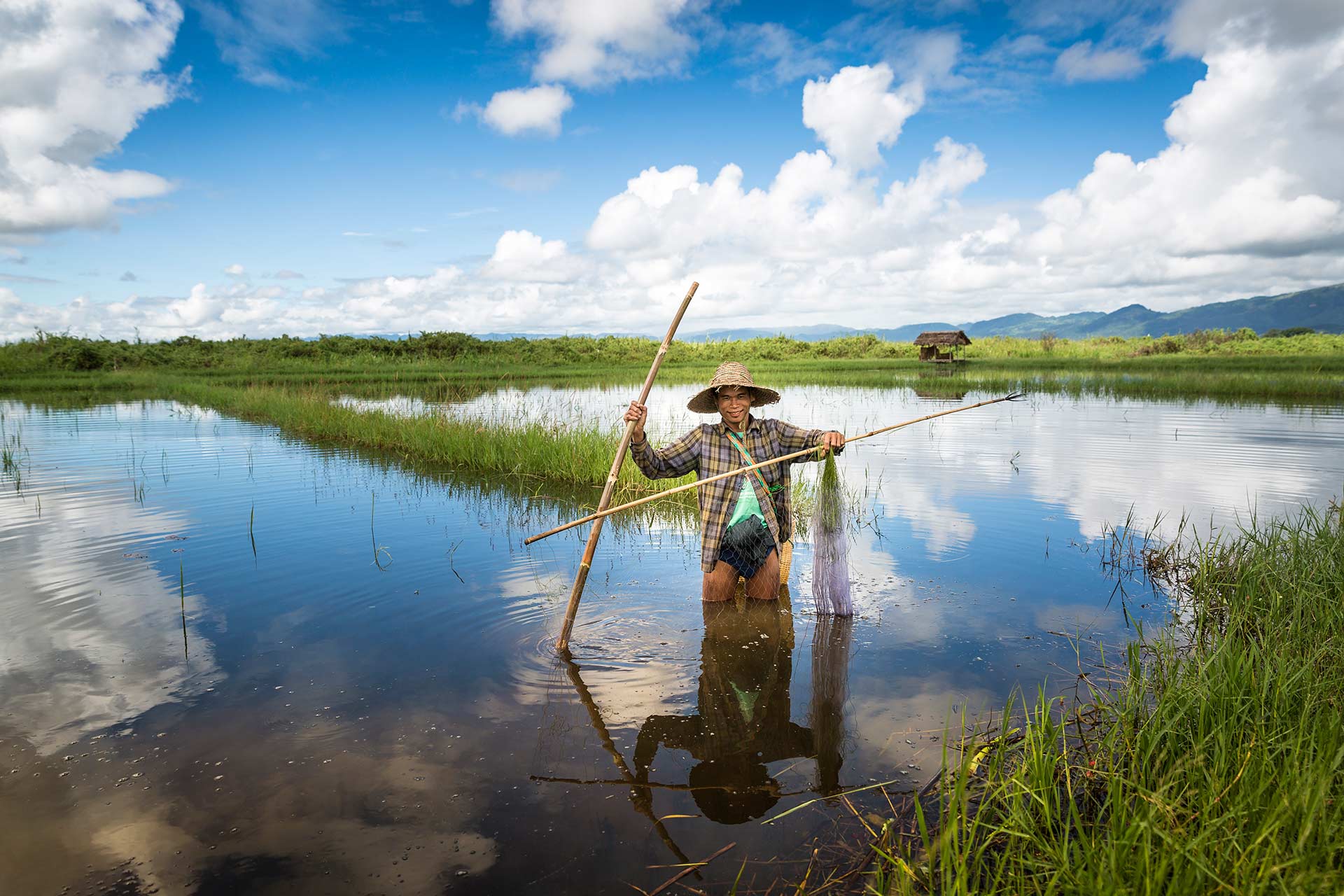
MOBILE PHONES AND INTERNET
In all the hotels that we are with PhotoTravel and in many restaurants we find WIFI, of course! it is very slow.
A recommended option is to buy a SIM card with internet that is purchased on arrival at the airport, they sell it at a very good price, for me it is very useful in my Photographic Trips, so I am always located and in contact with my guides.
HOW TO GET AROUND
Although there are modern bus companies, with buses in good condition, and bus lines throughout the country, you have to be careful, both because of the poor condition of the roads and the low level of road safety education of the drivers.
As for air transport, there has been a clear improvement in recent years and there have been no incidents of any kind. Domestic flight schedules often change.
Rail transport is very limited and the infrastructure is in poor condition.
WEATHER IN BURMA
In the monsoon season, from June to September, and specifically in the rainiest months, July and August, temperatures are not usually excessively hot.
The extremely hot season is the one that extends from March until the beginning of the rainy season, in June. Between mid-April and the end of May the trip is not advisable due to the high temperatures.
Just because you travel in the rainy season doesn’t mean it’s raining all the time. There are great differences between the coast, which is enormously rainy, and the interior. Bagan is one of the least rainy areas in Southeast Asia.
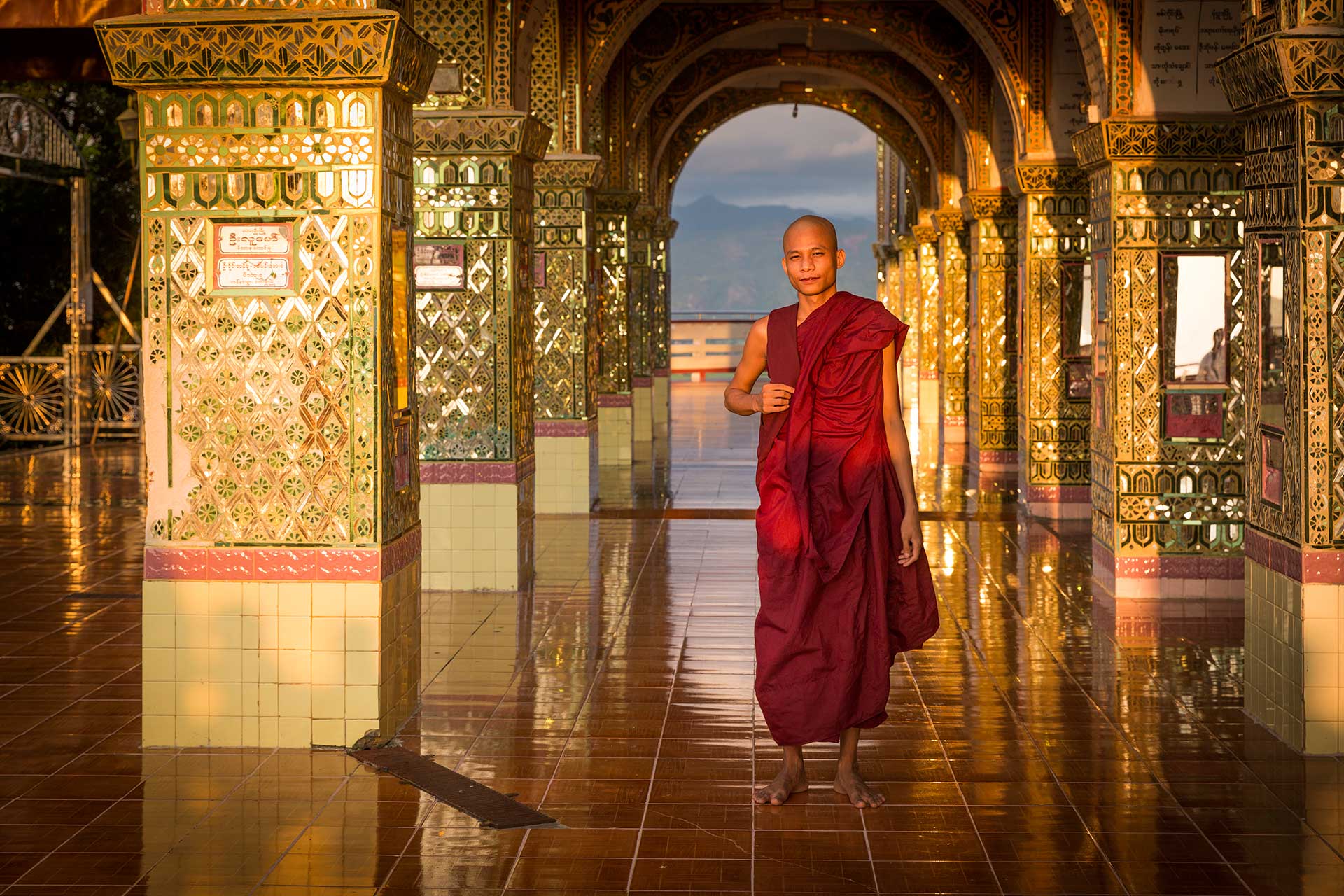
PLUGS
Here we have no problems, in all PhotoTravel Hotels we will have plugs as in Spain, electricity works at 230 volts and 50 Hz. For various reasons there can be power cuts that do not last long, although in hotels they are not noticeable because they usually have their own generators.
LAUNDRY
In Myanmar we must go light, washing clothes in is very simple and cheap. In the hotels where we are going to stay they do our clothes for very little… so we should not worry, or go too loaded…
OTHER CURIOSITIES
BETEL LEAVES
One of the things that will catch your attention in Myanmar is to see almost all the men with red mouths and teeth, and spitting all the time!, this is Bethel Leaves, a mixture of tobacco, spices, lime and nutmeg. I’ve tried it.. And the truth is that you must be weathered to chew that!
LONGYI
Both men and women dress in a long skirt tied well at the waist, without pockets where the mobiles fit at the waist and do not fall off!
TANAKA
If the red mouths catch your attention among men, women will surprise you that they all have their faces painted white/ochre, Tanaka is a wood that is scratched and in addition to protecting them from the sun they use it as decorative makeup.
PHOTO TRIP TO MYANMAR/ BURMA
An adventure where you will go with Gonzalo Sáenz de Santa María Poullet, an expert in Travel Photography and Documentary Photography.
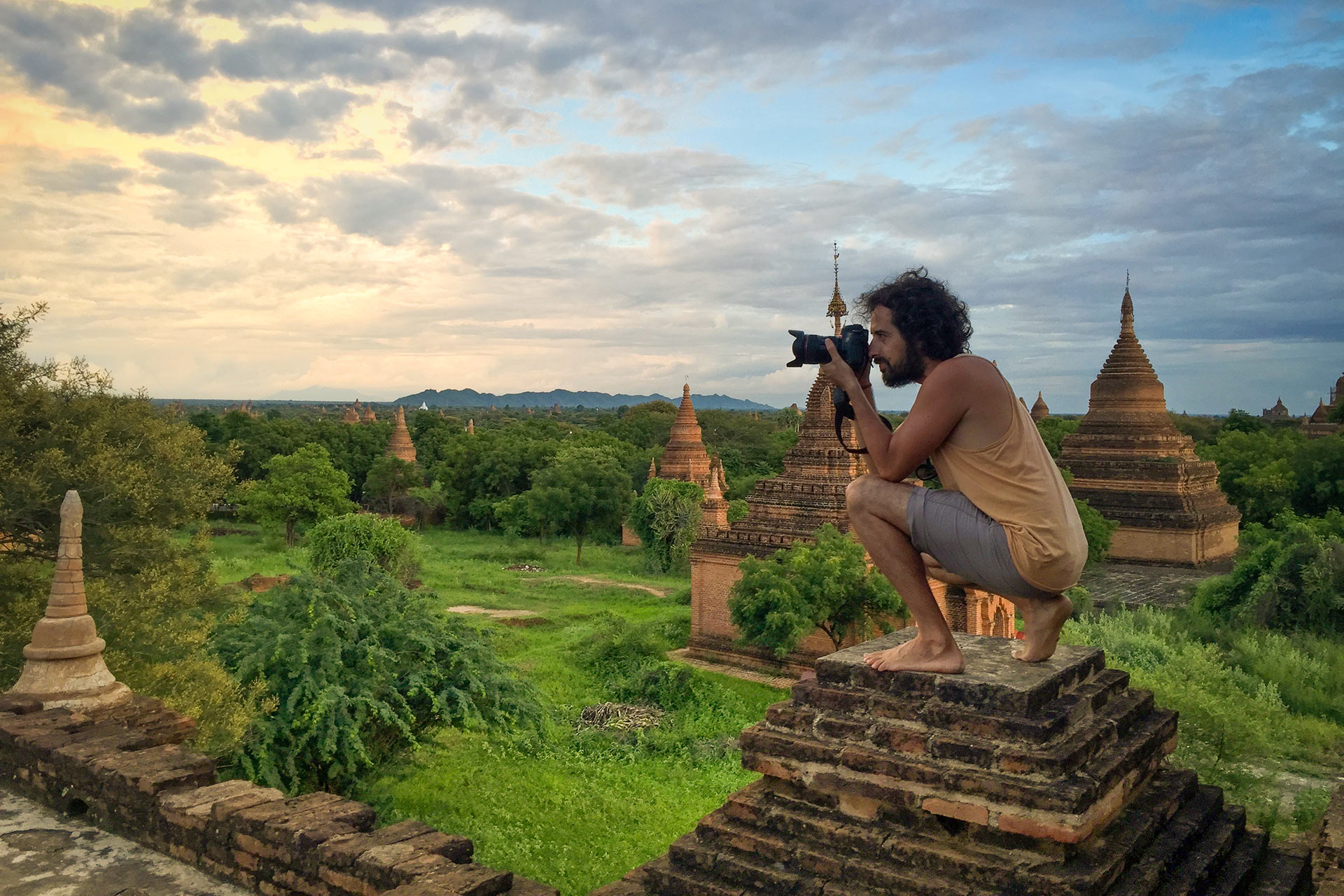
0


